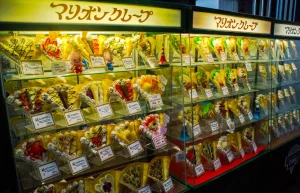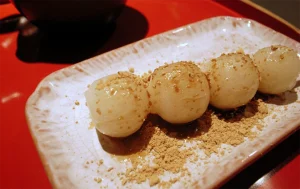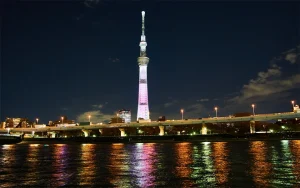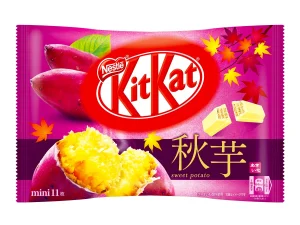Table of Contents
ToggleDiscover the Delicious World of Senbei: Japan’s Favorite Rice Crackers
When you think of traditional Japanese snacks, Senbei instantly comes to mind. These crispy rice crackers have been a favorite in Japan for centuries, offering a delicious combination of flavor, texture, and history. In this article, we’ll explore the fascinating world of Senbei, the different types, and what makes each variety special. Whether you are a seasoned snack lover or new to Japanese cuisine, you’ll soon discover why Senbei is a must-try treat.
What is Senbei?
Senbei is a type of rice cracker that originated in Japan. Made primarily from rice flour, these snacks are often seasoned with soy sauce, salt, or sweeteners, and can be either baked or grilled. Senbei has a long history dating back to the Edo period (1603–1868) and has since evolved into countless varieties, each with unique flavors and textures.
The Origin of Senbei
Senbei’s history is as rich as its taste. Originally, Senbei were made using leftover rice that was dried and then grilled. Over time, this simple recipe transformed into a variety of sophisticated snacks that come in various shapes, flavors, and textures. From crispy, savory delights to sweet, delicate bites, there’s a Senbei type for everyone!
Types of Senbei: Discovering Japan’s Rice Cracker Varieties
1. Shoyu Senbei (Soy Sauce Senbei)
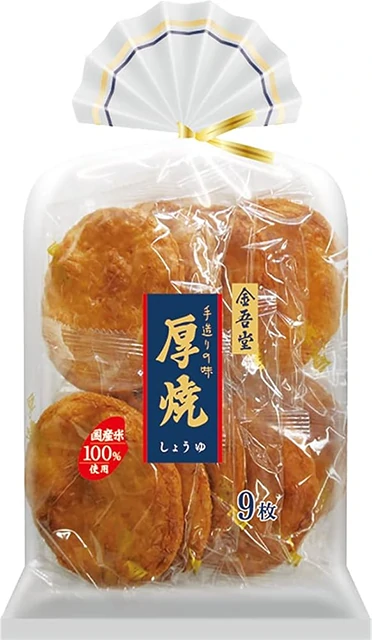
Shoyu Senbei is one of the most popular types, coated with a rich soy sauce glaze. These crackers have a deep, savory flavor that pairs perfectly with a cup of green tea. If you’re new to Japanese snacks, this is an excellent place to start your Senbei journey.
2. Arare (Bite-Sized Senbei)
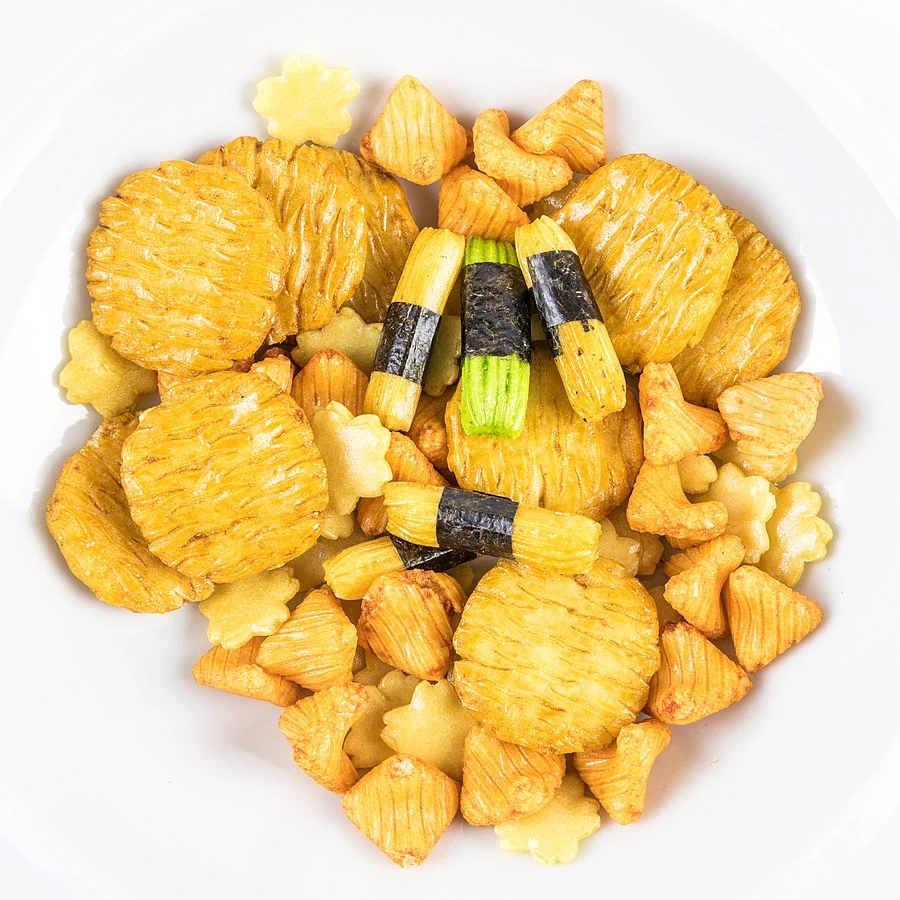
Arare are small, bite-sized rice crackers often seasoned with soy sauce or sugar. They come in various shapes, such as small squares, stars, or even fish, making them particularly appealing to children. Their crunchy texture makes them a perfect addition to any snacking session or tea time.
3. Nori Senbei (Seaweed-Wrapped Senbei)
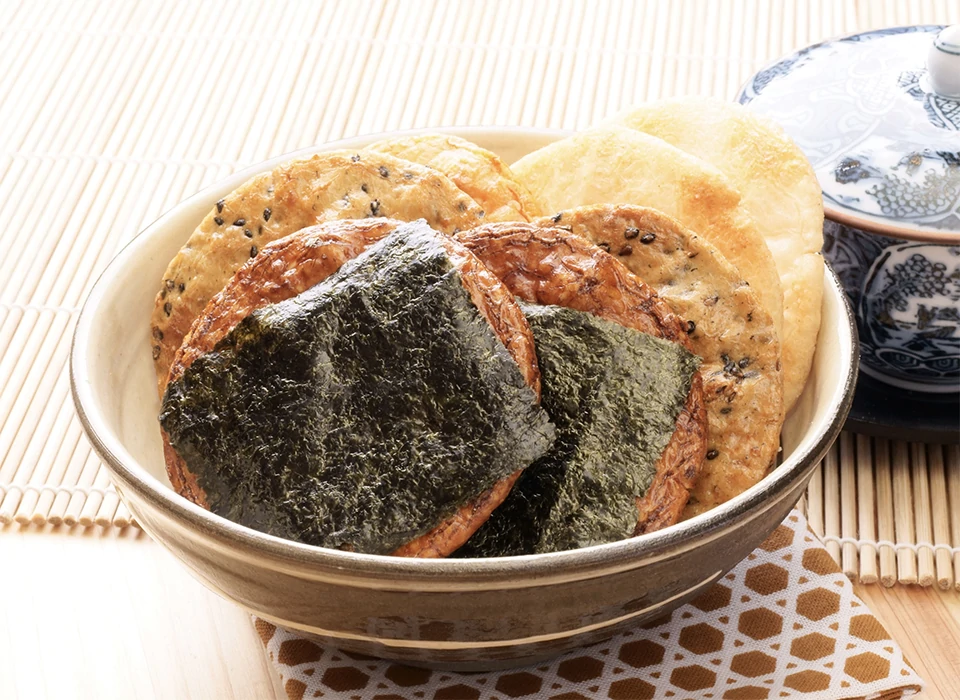
For a taste of the sea, try Nori Senbei. These crackers are wrapped in a sheet of nori (seaweed), adding an umami-rich layer to the crispy texture. Nori Senbei is perfect for those who love the combination of seaweed and soy sauce.
4. Yaki Senbei (Grilled Senbei)
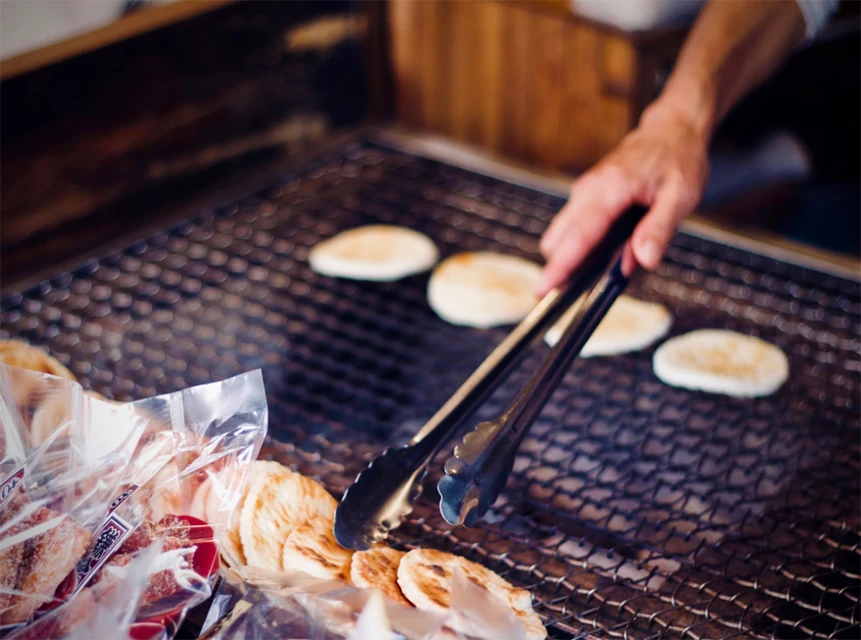
Yaki Senbei is grilled over an open flame, giving it a smoky, charred flavor that sets it apart from other types. These crackers can be brushed with soy sauce or miso for added depth and are often enjoyed by those who appreciate a bolder taste.
5. Age Senbei (Fried Senbei)

If you like a crunchier bite, then Age Senbei—which is fried instead of baked or grilled—might be your favorite. The frying process makes these crackers extra crispy and often slightly oily, delivering a more indulgent flavor experience.
6. Sato Senbei (Sweet Senbei)
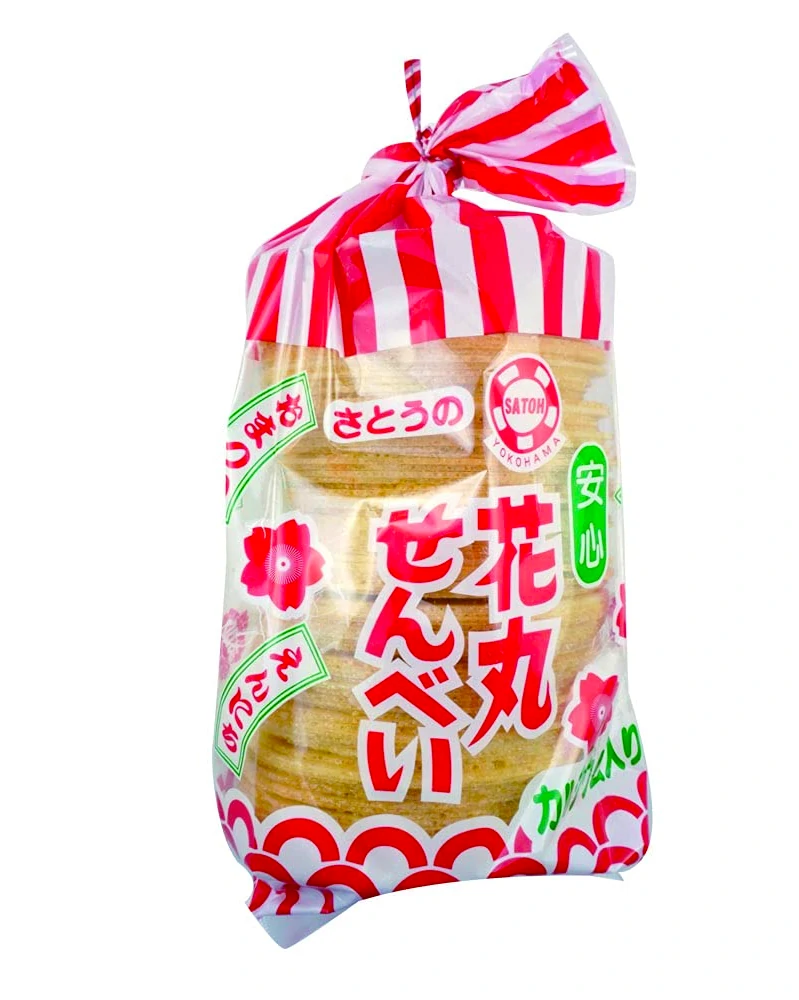
Not all Senbei are savory! Sato Senbei is a sweet variety made with sugar, honey, or sometimes even red bean paste. Perfect for those with a sweet tooth, these crackers are a delightful treat that contrasts sharply with the more common salty types.
7. Kaminari Okoshi (Puffed Rice Senbei)
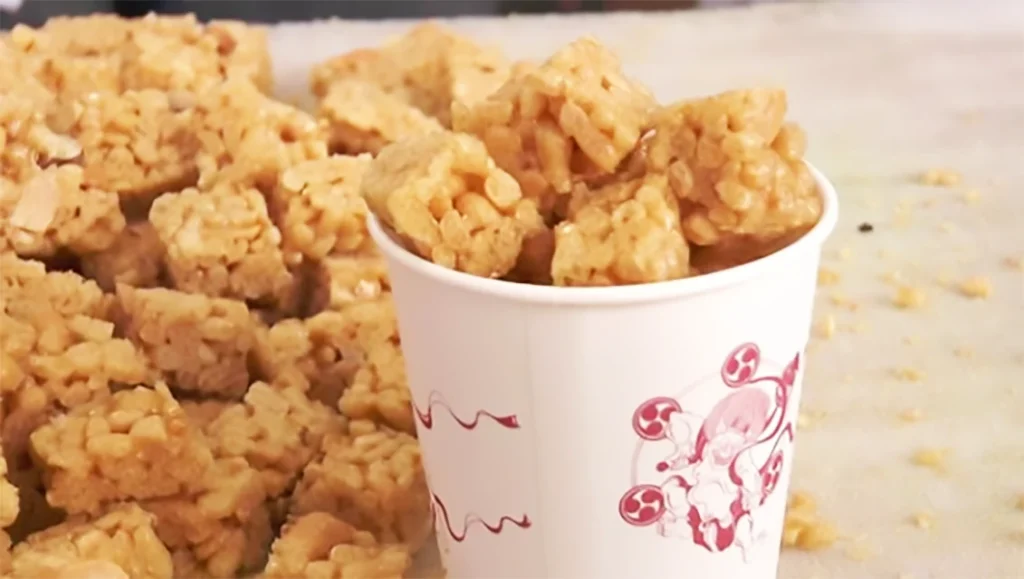
Kaminari Okoshi is a unique type of Senbei made from puffed rice and sweet syrup, often featuring peanuts or other nuts for extra flavor and texture. This sweet snack is popular at festivals and is loved by both children and adults.
Regional Varieties of Senbei
Japan’s diverse regions also offer their own takes on Senbei, each adding a unique twist to this beloved snack.
1. Soka Senbei (Tokyo)
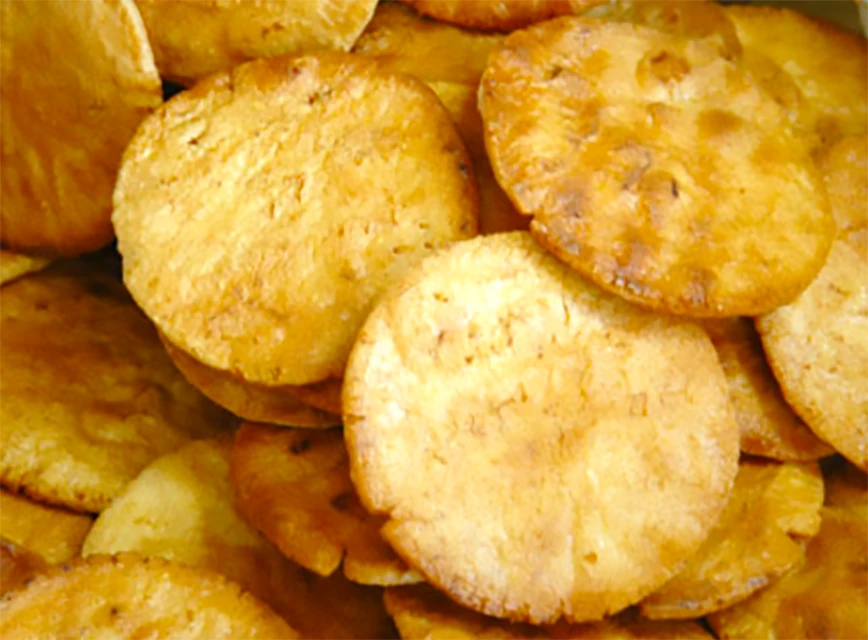
Hailing from Tokyo, Soka Senbei is known for its large, flat, and crunchy texture, often seasoned with soy sauce and mirin. It is typically handmade, which gives it a distinct homemade flavor and feel.
2. Usuyaki Senbei (Kyoto)
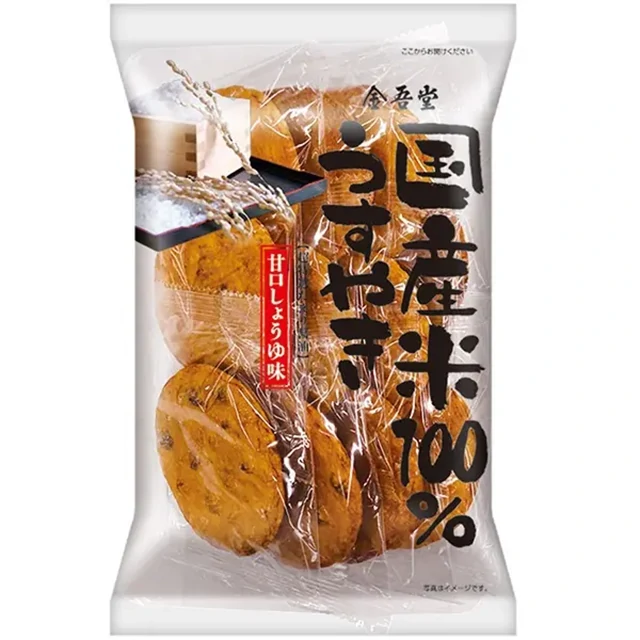
From the historical city of Kyoto, Usuyaki Senbei are thin and delicate crackers often flavored with matcha or sesame. These elegant snacks reflect Kyoto’s refined culinary traditions.
3. Zunda Senbei (Tohoku)
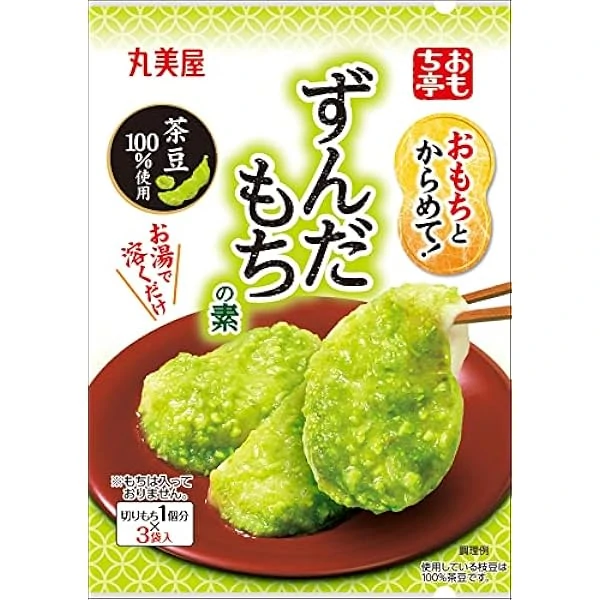
Originating from the Tohoku region, Zunda Senbei is a sweet variety made with crushed edamame beans and sugar, offering a unique flavor that is both sweet and slightly savory.
The Art of Enjoying Senbei
Enjoying Senbei goes beyond just eating; it’s an experience. Pair your favorite Senbei with a cup of green tea or sake for a true Japanese snack time. Whether you’re looking for a quick snack or a cultural experience, there’s a Senbei type to match your mood.
Want to know more about Senbei? Why not read our article on The World of Senbei.
Why Choose Joybox for Your Senbei Fix?
If you’re eager to explore the delicious world of Senbei, why not start with Joybox? Our subscription box features a curated selection of Japan’s most popular and unique snacks, including an array of delicious Senbei varieties. Experience the flavors of Japan from the comfort of your home with Joybox—the best way to discover new snacks and enjoy old favorites!
Frequently Asked Questions About Senbei
1. Is Senbei Chinese or Japanese?
Senbei is a traditional Japanese snack. While rice crackers exist in various forms across Asia, Senbei specifically refers to the Japanese version that has been part of the culture since the Edo period.
2. What does Senbei taste like?
Senbei comes in many flavors, but generally, it has a crispy texture with either a salty, savory taste from soy sauce, seaweed, or a sweet taste from sugar or honey coatings. The flavor can vary depending on the specific type of Senbei.
3. Is Japanese Senbei healthy?
Yes, Japanese Senbei can be considered healthy, especially when baked instead of fried. They are low in calories and often made with natural ingredients like rice, soy sauce, and seaweed, offering a nutritious snack option.
4. What is the difference between Menbei and Senbei?
Menbei is a specific type of Senbei flavored with mentaiko (spicy cod roe) from the Fukuoka region. It combines the classic crunch of Senbei with the unique flavor of spicy cod roe, creating a distinct taste experience.
5. What is a Senbei in English?
In English, Senbei is typically referred to as a “Japanese rice cracker.”
6. Is Senbei a rice cake?
No, Senbei is not a rice cake. While both are made from rice, rice cakes are usually soft and chewy, while Senbei are crispy, crunchy rice crackers.
7. Who invented Senbei?
The exact inventor of Senbei is not known, but the snack has its roots in ancient Japan, evolving over centuries, particularly during the Edo period.
8. Is it Senbei or Osenbei?
Both “Senbei” and “Osenbei” refer to the same snack. “Osenbei” is a more formal or polite way of saying “Senbei” in Japanese.
9. What is the difference between Senbei and Arare?
Senbei and Arare are both rice crackers, but they differ in size and texture. Senbei is usually larger and flat, while Arare is smaller, often bite-sized, and can come in various shapes, such as squares or stars.
10. What is a Senbei in Korean?
In Korean, Senbei is referred to as “gwaja” (과자), which broadly means “snack” or “confectionery.” However, Senbei as known in Japan does not have a direct Korean equivalent.
Final Thoughts: Finding Your Favorite Senbei
With so many types of Senbei available, there’s always something new to try. Whether you love sweet or savory, crunchy or soft, there’s a Senbei that’s perfect for you. Why not begin your Senbei journey today and experience the joy of this traditional Japanese snack?
Don’t Miss Out!
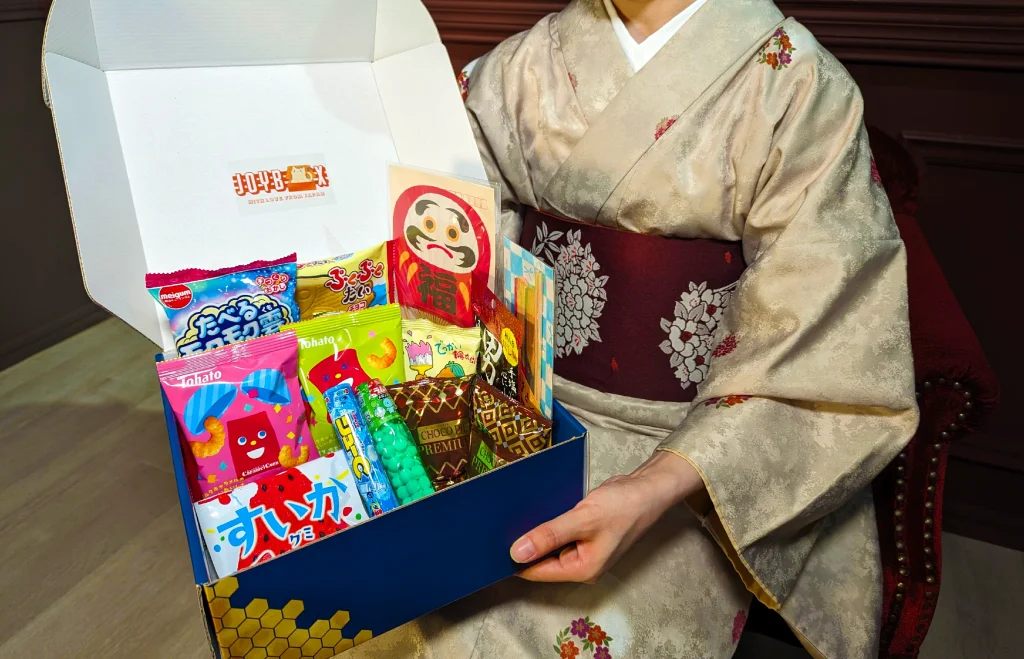
For a delightful adventure into the world of Japanese snacks, get your Joybox now and enjoy a variety of Senbei along with other delicious Japanese snacks and sweets delivered straight to your door.
By exploring the different types of Senbei, you are not only tasting a piece of Japan’s culinary heritage but also diving into a cultural experience that spans centuries. Enjoy the crunchy, savory, and sometimes sweet journey that Senbei offers!



